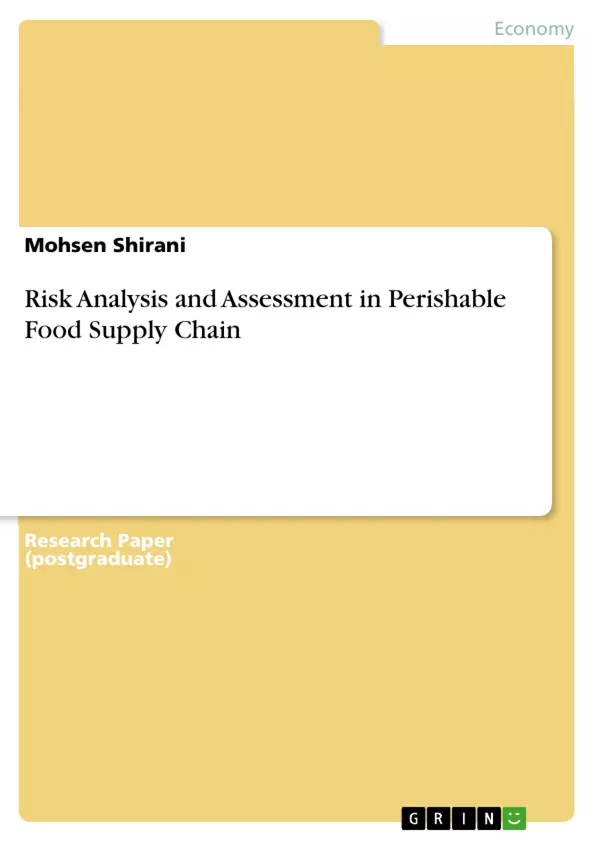There are some risk analysis studies in different steps of food supply chain as production, distribution, logistics, and retailers. However, there is gap in risk analysis for all supply chain of food industry, from producer to end customer. Therefore, the focus in this study is risk analysis in supply network of perishable food and providing a model for finding and reducing potential risks. The aim of this study is mainly risk reduction of perishable food industry which has influence on improvement of public health level and decreasing food-borne diseases.
Inhaltsverzeichnis (Table of Contents)
- Problem Description:
- Objectives:
- Introduction:
- Methodology:
- Risk analysis:
- System description:
- Hazard identification:
- What-if Analysis:
- HAZOP Study:
- Failure Mode Effect Analysis:
- Event tree analysis (ETA):
- Risk Matrix Evaluation:
- Conclusions:
- References:
Zielsetzung und Themenschwerpunkte (Objectives and Key Themes)
This study focuses on the risk analysis of perishable food supply chains, aiming to provide a model for identifying and reducing potential risks. The main objective is to minimize risk in the perishable food industry, leading to improved public health, a reduction in food-borne diseases, and decreased costs associated with spoiled products. Additionally, it aims to increase customer satisfaction and company revenue by ensuring the delivery of healthy and timely products.
- Risk analysis in perishable food supply chains
- Food safety and public health
- Consumer confidence and trust
- Supply chain complexity and integration
- Risk reduction and management strategies
Zusammenfassung der Kapitel (Chapter Summaries)
- Problem Description: This chapter highlights the increasing concerns about food safety risks in Europe and the impact on customer confidence and buying behavior. It discusses the prevalence of foodborne illnesses and the economic burden they impose. Additionally, it introduces the EU regulation No 178/2002/EC, which emphasizes the need for integrated food safety approaches and risk analysis throughout the food supply chain. The chapter also emphasizes the complexity of globalized food supply chains and the need for accurate safety systems.
- Objectives: This chapter outlines the study's goals, which include addressing the gap in risk analysis for the entire perishable food supply chain. It aims to develop a model for identifying and mitigating risks, ultimately leading to improved public health, reduced food-borne diseases, and increased customer satisfaction.
- Introduction: This chapter explores the specific requirements of perishable food supply chains, including short distribution times, the need for preservatives, long-distance transportation, and the importance of maintaining cold chain integrity. It also addresses consumer concerns about food quality and the potential impact on consumption patterns. The chapter concludes by highlighting the importance of transparency in the supply chain and the development of methods for detecting damaged food.
- Methodology: This chapter explains the research approach used to analyze and assess risks in the perishable food supply chain. It involves reviewing existing literature, describing the current situation, and identifying key noise factors. The study utilizes various hazard identification tools, including What-if analysis, HAZOP analysis, and FMEA. The chapter concludes with a description of the risk matrix evaluation process and the use of risk reduction option analysis and selection.
Schlüsselwörter (Keywords)
This study focuses on risk analysis and assessment in perishable food supply chains, utilizing various tools such as HAZOP, FMEA, and event tree analysis. The research investigates the impact of food safety risks on consumer behavior and explores strategies for reducing risks and improving public health.
- Arbeit zitieren
- Mohsen Shirani (Autor:in), 2011, Risk Analysis and Assessment in Perishable Food Supply Chain , München, GRIN Verlag, https://www.hausarbeiten.de/document/192103


